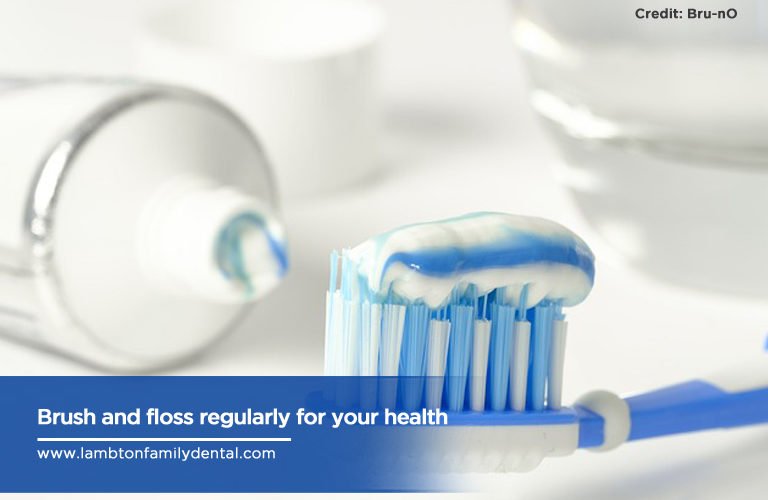When we think about someone losing a tooth, the most common image we conjure is a child losing their milk teeth. The truth is that it happens to adults as well. There are many different reasons that adults lose their teeth, including:
- Poor dental care – The most common cause of tooth loss is poor dental health. If infection reaches below the gumline, it can separate the teeth from the gums. This makes the tooth unstable, causing it to either fall out or require replacement.
- Tooth trauma – Injuries and impacts can loosen teeth, or make them fall out completely. Any direct trauma to the mouth can cause this kind of damage (like vehicular accidents or sports injuries).
- Tooth decay – Tooth disease can build up over time. Smaller cavities can be fixed with crowns or fillings, but widespread decay may cause too much damage, and the tooth may have to be removed to avoid more severe issues.
- Disease – Oral diseases can affect the teeth and bone structure of the jaws. This disruption can destabilize the teeth and make them more likely to fall out.

- Smoking – Smoking affects your oral health, particularly the gums. Smokers are generally at higher risk of gum disease, and thus more likely to lose teeth.
- Tooth-grinding – Tooth-grinding (also known as bruxism) can cause tooth trauma over time. Grinding and clenching eventually wear down the enamel, making the teeth more vulnerable to infection and decay.
- Age – As people age, their teeth wear down through normal use and the risk of oral complications increases. For most people, being over the age of 35 increases the risk of tooth loss.
Regardless of the cause, losing a permanent tooth is more than a matter of cosmetic dentistry, it’s a dental emergency. If some direct trauma chipped or knocked out the tooth, contact your dental clinic immediately. If you see a dentist soon enough, they may be able to save the tooth and reattach it.
There are steps that you can take that can preserve the tooth and prevent infection to the socket. Keep these steps in mind to avoid permanent tooth loss.
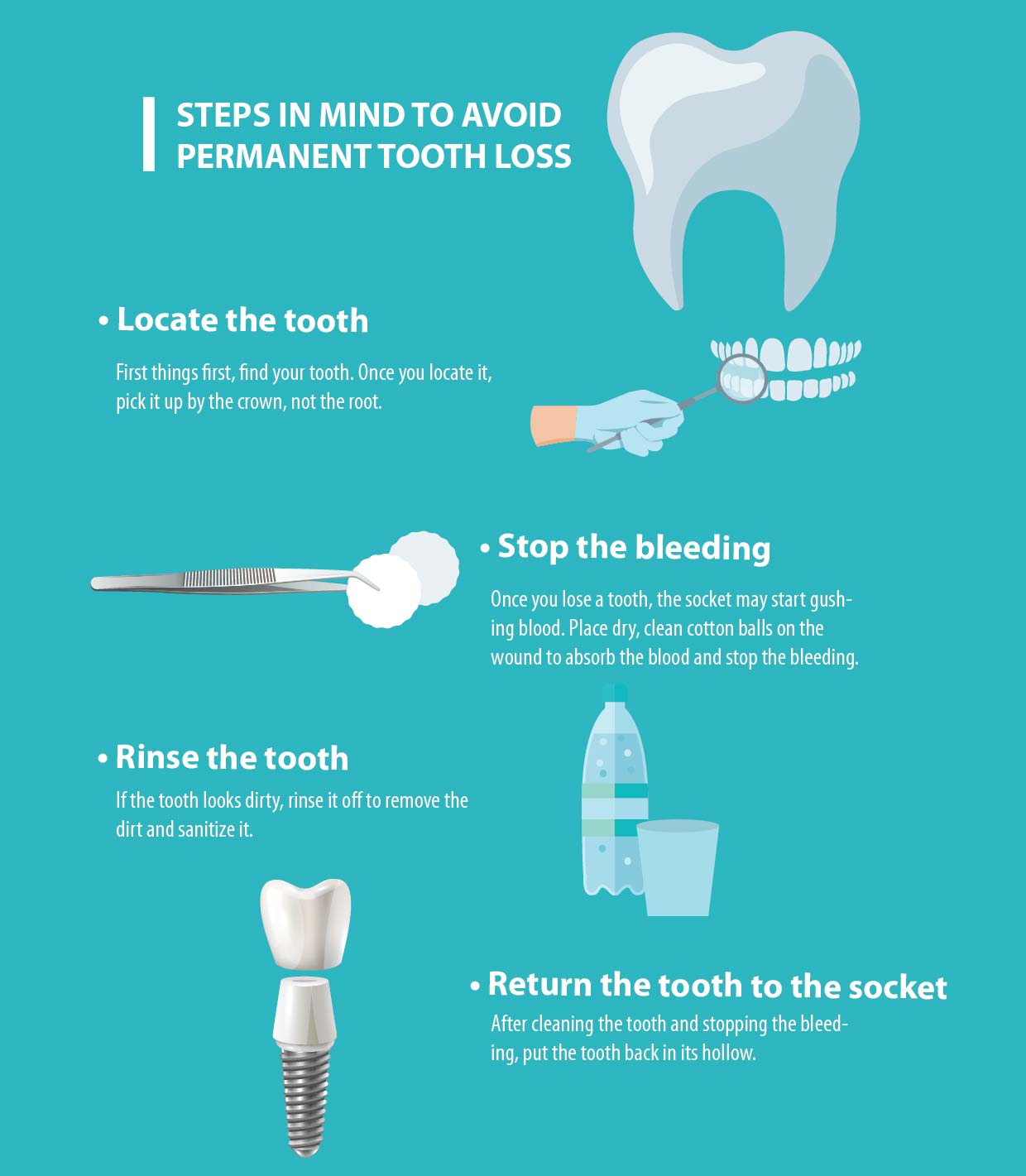
- Locate the tooth – First things first, find your tooth. Once you locate it, pick it up by the crown, not the root. Touching the root can damage the soft tissue and cause more damage. Handle the tooth with care to preserve the tooth so that your dentist might be able to reattach it.
- Stop the bleeding – Once you lose a tooth, the socket may start gushing blood. Place dry, clean cotton balls on the wound to absorb the blood and stop the bleeding. Apply gentle pressure on the cotton balls with your finger. This puts pressure on the injury to stop the bleeding. Change the cotton balls often to keep absorbing blood and promote clotting. When you change the balls, rinse your mouth with clean water and spit out. Avoid swallowing the blood; this can cause vomiting.
- Rinse the tooth – If the tooth looks dirty, rinse it off to remove the dirt and sanitize it. Use saline solution or milk to kill germs and prevent infection. Refrain from using soap or other cleaning products that could affect the tissue. Avoid scrubbing or scraping the tooth, even to clean it. This could remove valuable tissue for reattachment. Instead, rinse off the tooth and crown.
- Return the tooth to the socket – After cleaning the tooth and stopping the bleeding, put the tooth back in its hollow. This can keep the root and vital tissues protected. Your saliva will help preserve the tooth and prevent infection. After inserting the tooth, hold it in place with medical gauze or a clean washcloth. Gently bite down on the gauze. The pressure can keep it stable until you get to the dentist.
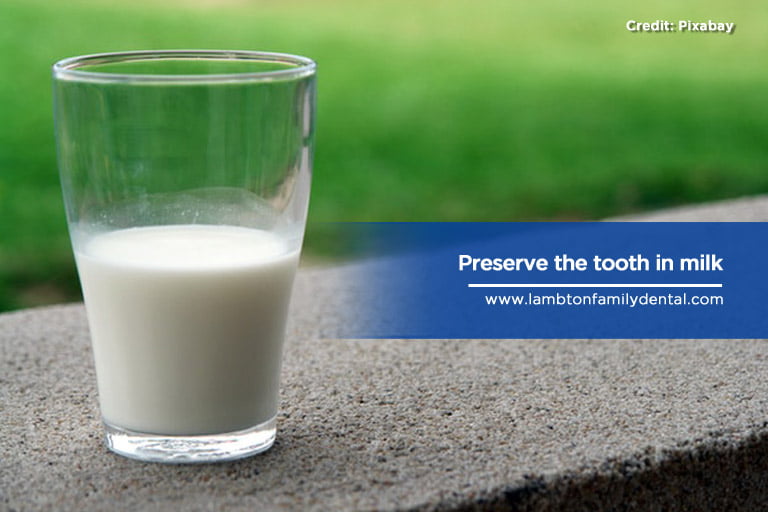
Preserve the tooth – If you can’t reinsert the tooth, keep it preserved in a sterile solution. A saline solution or a glass of milk can work. Avoid putting the tooth in fresh water. Water doesn’t preserve the tooth as well and can create complications when it’s time to reattach it. If you don’t have milk or saline solution, tuck the tooth between your gum and cheek. This way you can keep it in your mouth and exposed to saliva.
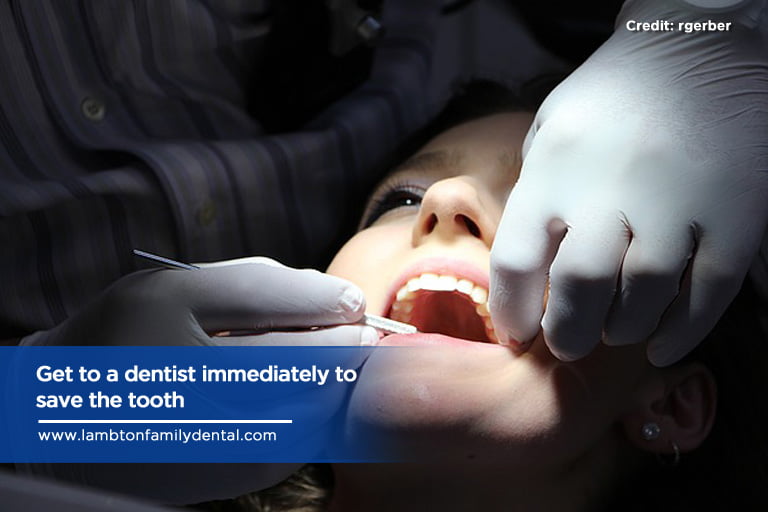
- Call your dentist – Head to the dentist’s office immediately. Move quickly and get the arrangements in place to make the visit smoother. The sooner you can get treatment for the tooth, the better. There’s usually a one-hour window to reattach the tooth, so time is of the essence. In the event you can’t find a dentist in time, visit an emergency room.
- Bring the tooth – Sometimes in the heat of the moment, we forget the essentials. Bring the tooth with you to the dentist if you are not able to reseat it in the socket.
Things to Avoid After Losing a Tooth:
- Medication – Avoid taking any medicine before visiting the dentist if you can bear the pain. During the operation, you may need to be sedated. It’s safer not having other medication in the bloodstream that can cause complications. If the pain is unbearable, apply a heating pad or a bag of ice to your chin or jaw to manage it.
- Eating and drinking – Do not eat or drink anything while waiting to see the dentist. With your tooth missing, the socket is open to food and drink. Getting anything in the socket can cause a secondary infection. It’s safer to keep the area clean until you can get help. If you must drink, use a straw to direct water past the tooth and into the back of the mouth.
Replacing Lost Teeth
If worst comes to worst and you find you can’t replace your missing tooth, you will need to replace it. Gaps between teeth can cause oral complications that affect other teeth. A replacement helps preserve your smile and protects your teeth and jaws from further damage. Some of the available options include dental implants, dentures, and bridges.
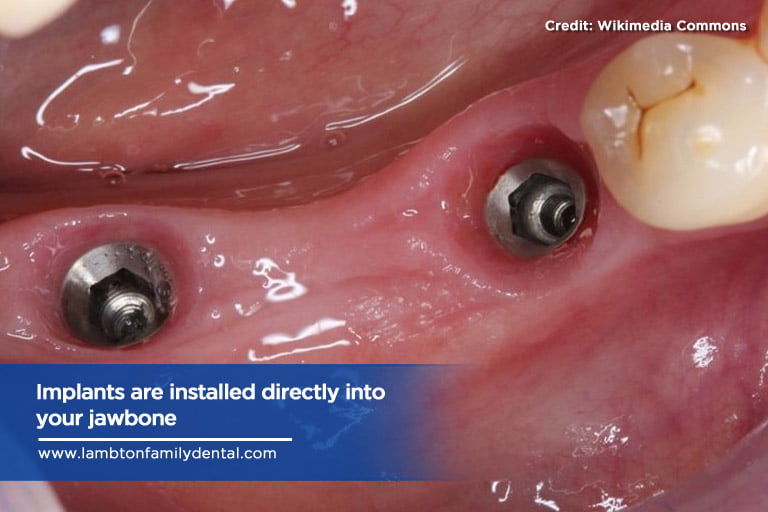
- Implants – Dental implants are the most permanent dental prostheses. A titanium root is installed into the jawbone as the base for a replacement tooth. Implants generally last for years, making them a long-term investment.
- Dentures – Partial dentures are a cost-effective, non-invasive option for replacing missing teeth. They consist of a metal frame housing a replacement tooth that clasps around the surrounding teeth. Dentures are often recommended when the gums and jawbone are too weak to support an implant.
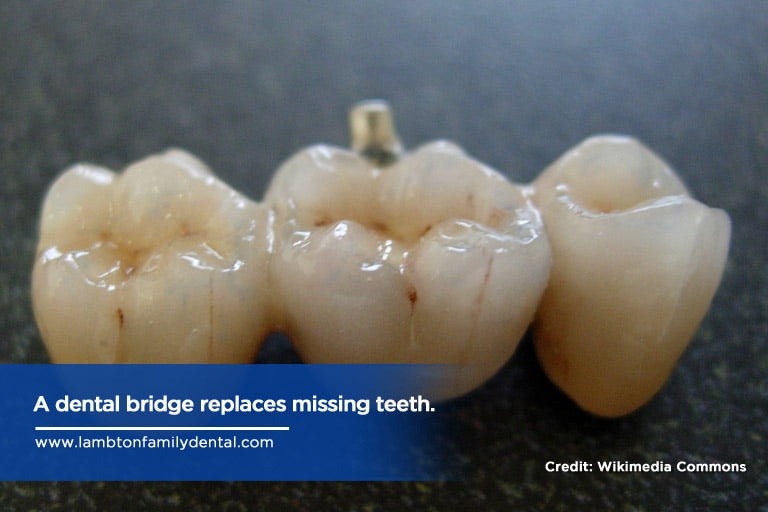
- Bridges – If the gap between your teeth is narrow, bridges can be an effective prosthetic. A bridge has two parts: the replacement teeth, and the abutment, where the bridge is attached to the surrounding teeth. Unlike a denture, bridges are permanently attached to the teeth.
Move quickly during dental emergencies to increase your odds of preserving your teeth. Losing a permanent tooth can be a predicament, but there are ways to solve the problem before it significantly affects your overall oral health. Use these tips to guide you in case the worst happens. For full dental services, including operations, give Lambton Family Dental a call.
Lambton Family Dental provides dental services for the entire family. Good dental habits start young, and we’re ready to help your little ones every step of the way. We also offer a wide variety of services, including cosmetic dentistry. Give us a call at (519) 344-5747 to make an appointment. We’re happy to help you.

